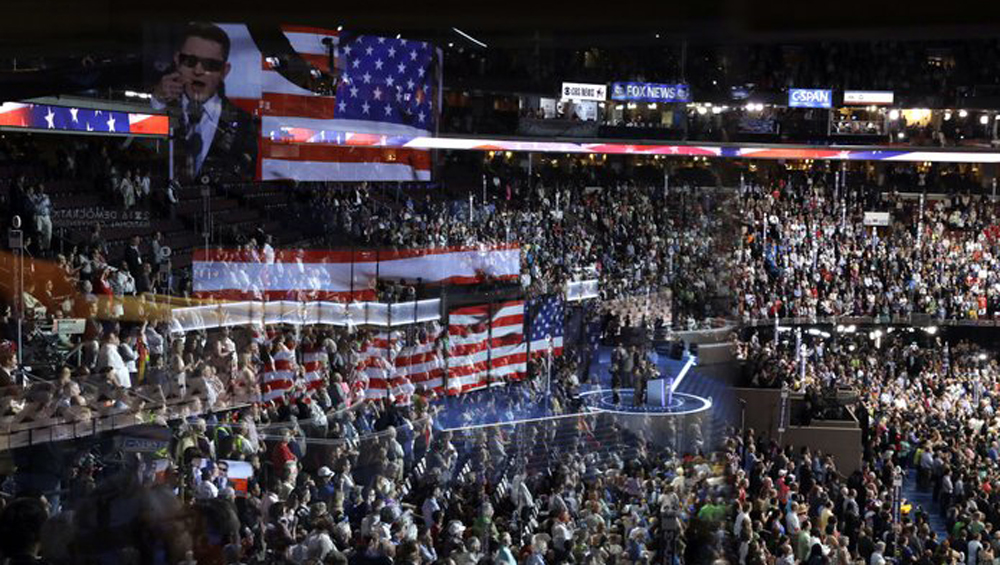
TVN Focus On Journalism | Local TV Plans Reduced Convention Presence

The COVID-19 crisis has disrupted everything from pre-kindergarten classroom learning to space exploration. Somewhere in between those two entries on the list is the Democratic and Republican National Conventions and the ways in which TV news groups will cover them in the challenging era of social distancing.
The Democrats decided in June that their mid-August gathering would go virtual. Most events will be broadcast on television and via digital streaming, with few audience members at its Milwaukee site, and nearly all of its delegates staying home.
On the Republican side, all of their late-August festivities were originally scheduled to take place in Charlotte, N.C. But to appease President Trump, who wished to sidestep North Carolina’s mask-wearing mandate, the party shifted most convention events to Jacksonville, Fla. By late June, however, after a Florida surge in coronavirus cases, that city issued its own mask mandate. Convention planners then looked to move many of its Jacksonville gatherings outdoors, before Trump canceled the Florida festivities altogether late last week.
In past, non-pandemic presidential campaign cycles, TV station groups planned their national conventions’ coverage months in advance, booking travel arrangements and dishing out assignments for anchors, reporters, producers and camera operators from across the U.S. The radical fluidity of the COVID-19 crisis, and particularly the heavy health risks associated with being among crowds of people, has rendered such traditional processes impossible.
But the show must go on, and news teams are doing their best to provide viewers coverage of these important moments from the campaign trail. Here’s some of what station groups across the country are thinking.
Safety First
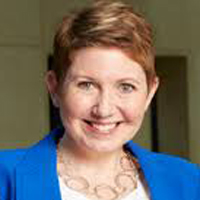
Barb Maushard
“The health of our crews is priority number one — always. Period,” wrote Barb Maushard, SVP of news at Hearst Television, via email. The station group’s Washington bureau will lead its coverage effort and, overall, Hearst will likely have fewer stations represented at the conventions than it’s had in the past, to minimize health risks. “[B]ut we are keeping options wide open and adapting along the way so our viewers get what they need and expect,” Maushard added.
Tunes of similar melodies — fewer people on the ground, following every suggested precaution, remaining flexible — were heard from her counterparts across the industry.
Scott Livingston, VP of news at Sinclair Broadcast Group, says his station group will send fewer folks out into the field. Just one crew from each station and one national crew from Sinclair’s Capitol Hill bureau will be at each of the three convention sites.
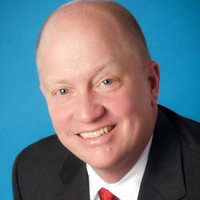
Scott Livingston
Most of the personnel will travel to the conventions by car, but when air travel is a must, Livingston says bookings will be diverted to less-trafficked airports, i.e., the Piedmont Triad International Airport, outside Greensboro, instead of Charlotte’s international hub. Each staffer will practice social distancing and wear masks, even on air, in any instance where they “can’t control their environment,” he says.
Gray Television’s Washington Bureau Chief Jacqueline Policastro says much of the labor performed by reporters in the field will be done remotely, with staffers meeting at shoot sites instead of first reporting to a newsroom and traveling together.
“Everyone on our team, we all know how to shoot, write and edit,” she says. “So we’ll all have cameras, laptops, cell phones [and] light kits at our disposal. We can ultimately do all this work from home if we need to.”
E.W. Scripps isn’t sending any members of station newsrooms to any of the convention sites out of COVID-19 contraction fears. Sean McLaughlin, the company’s VP of news, says they’re using only “central resources” for coverage.
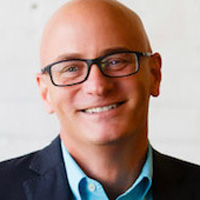
Sean McLaughlin
For example, before the Florida cancellation by the RNC, Scripps intended to assign two statewide reporters, one political and one investigative, to the Jacksonville gathering. If such an event were held outside of pandemic times, the company’s five Florida stations would offer additional coverage, treating the convention as a local story. Instead, they were planning to air segments from the two statewide reporters who would have been onsite. (As of press time, updated RNC plans have not been released.)
Depending on how things go at both the RNC and DNC, McLaughlin says there are still scenarios that could demand Scripps to scale down even further. He adds that Scripps won’t force any of its people into a setting where they feel their safety is compromised and may hire security personnel to accompany them.
Similarly, Chuck Steinmetz, SVP and GM of WITI Milwaukee, a Fox-owned station that will cover the DNC locally and for the entire station group, says his team members will “travel in groups” and will have security accompanying them. He also says that his people on the ground “all know that if they’re in a situation where if something’s not right or there’s danger, they will just leave. They don’t have to call the desk; they don’t have to call into a manager. It’s safety first.”
Technology Now At The Forefront
Considering that the DNC is mostly a virtual event, and with delegates and other key figures participating from home, likely during both conventions, station groups will have to leverage technology as best they can to provide coverage. From a news production standpoint, if there’s a silver lining in terms of the timing of the pandemic, it’s that teams now have months of experience with the technology they might use most.
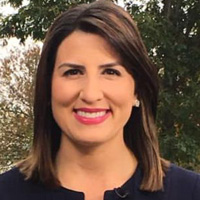
Jacqueline Policastro
“We’re going to work to set up Zoom or Skype interviews with those [key] folks where they’ll allow,” Gray’s Policastro says. “I think our viewers [understand] that the quality might not look exactly like what they’re used to seeing, the [interviewees] might not be in the most dynamic background. But they understand that we’re there, we’re having access to people that matter, and we’ve already proven since February that we can do this and we’re confident.”
Some note that with the more tech-reliant, mobile teams on the ground, coverage of the conventions could even broaden in some ways.
“You’re able to do, in a half hour or hour newscast, four, five, six Zoom interviews, with people locally, around the nation, [and] it’s accepted by the viewer now where you don’t have to have the guest travel and come to the studio,” says Patrick Paolini, SVP-GM of Fox’s WTTG and WDCA in Washington, D.C. “It allows us to cover more stories, get more information from a wide, diverse group of people [and] has engaged the anchors and reporters in thinking of more people they can interview.”

Patrick Paolini
Paolini also observes that, because the DNC will be livestreamed by every station group at the same time, his news corps, as well as prospective guests, will be able to comment on the proceedings in real time, across digital platforms.
Sinclair’s Livingston offers a similar remark while adding: “Our expertise with these technologies will also allow us access to key voices immediately, in all of our markets, and that’s content that can be shared amongst all of our stations.”
A Boon For Local Issues’ Coverage
With stations sending fewer personnel to the national conventions, they’re still going to need to fill time. Scripps’ McLaughlin expects that coverage will be “less about who’s speaking at the podium and more about the people who are at home dealing with the things that are going on right now.” These are issues, he says, “that are ultimately going to decide the election.
“In a lot of ways, you can argue that the journalism piece of this is going to be a lot more compelling and a lot more relevant because it’s less produced,” McLaughlin continues. “That’s always been the thing with political conventions over the last few years — they’re produced. We’re sort of along for the ride to a large degree.”
With the delegates being remote and, ironically, more accessible through technology, the situation “provides unique local coverage opportunities,” he says.
The Washington Fox stations will also focus more strenuously on local issues than they have during past national convention coverage, Paolini says. With the recent influx of new technology, and so many people still stuck at home, these local issues can be tackled in new, creative ways.
“We really have used polling through the pandemic and the protests to create content,” Paolini says. His team has posted questions on the station’s website, such as “Are you worried about a meat shortage at the grocery story because of coronavirus?” Anchors and other personnel then blast the link on social media when a new poll begins.
Paolini says one of these polls, which the station calls “Instapolls,” recently netted 50,000 votes. The polls then prompt on-air reaction and discussion. “We think we’re going to use the Instapoll on the political front, heavily, to not only gauge what our viewers are thinking related to certain issues, [but to] drive content as we cover the election,” he says.
Precedents Will Be Set
Though many of the procedures and approaches to covering the DNC and RNC this year will technically, out of necessity, be “new,” they will also represent just another leap in the same direction these organizations have already been trending. Using technology and pool reporters, for example, not only makes sense from a health standpoint in a pandemic, but financial sense for the whole company as well.
“Instead of having 20 crews [at a convention], we have three,” Sinclair’s Livingston says. “That’s a little bit of what we do on a daily basis: We look for opportunities to maximize our local resources to create content for the entire group.”
Furthermore, particularly in the case of the national conventions, viewer expectations have changed in ways that allow station groups to dedicate less resources to their coverage.
“I don’t know that in 2020 a local news consumer is enamored with their local anchor at a convention; I don’t know that that’s particularly impressive or relevant like maybe it was 20 years ago,” McLaughlin says. “So we’d already begun being a little more centralized and targeted.”
“I think this entire pandemic itself, and how local stations have had to adjust to covering a variety of stories and issues, has created a precedent going forward,” Paolini says, “not only from how we’re going to cover elections and other major events, but certainly the daily news coverage.”
There’s still much about how the DNC and RNC will unfold that the TV news industry doesn’t know. The developments are as fluid as the pandemic during which they’re being held has proven to be.
Though there’s great human risk permeating the work landscape, fortunately (for lack of a better word) reporters and their crew members have found themselves thriving in uncertain, dangerous conditions countless times before. As much as things may seem to have changed, ultimately, they’ve stayed just the same.
“We are 100% flexible, and honestly I think we’re made for this; this is what we do,” Gray’s Policastro says. “We wake up every day thinking that the story might be one thing, and it can be something else, and it changes throughout the day, and we’re constantly on top of it. So we’re built to handle the changes that are coming our way.”
And after the conventions, we still have Election Day — with so much up in the air, including a baseline understanding of just how people will vote — to look forward to.




































Comments (1)
2018bstyrevr says:
July 29, 2020 at 7:32 am
Does this mean we have to see less of these worthless anchors and reporters???